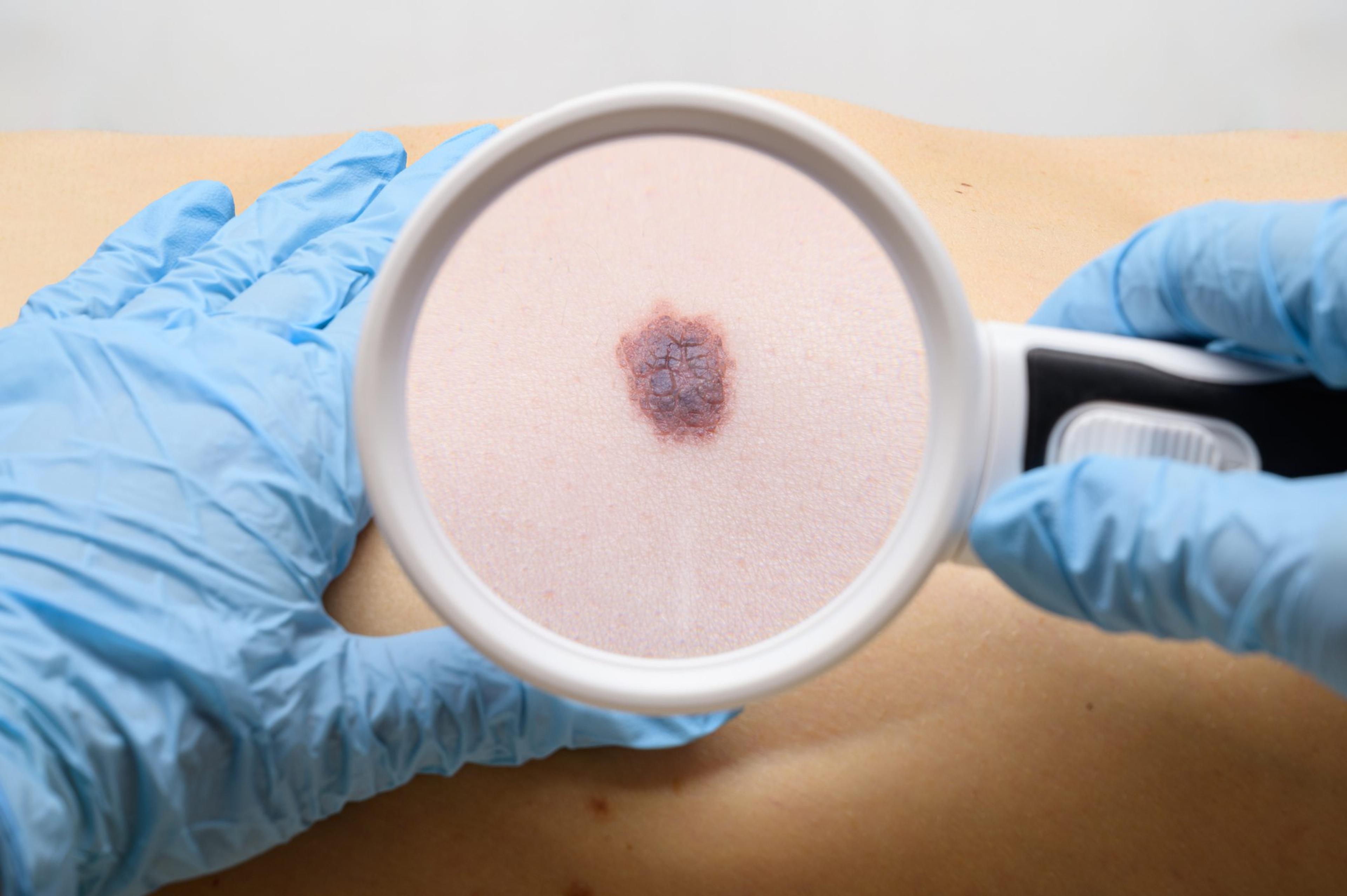
More people are diagnosed with skin cancer each year in the U.S. than all other cancers combined, according to the Skin Cancer Foundation. In fact, one in five Americans will be diagnosed in their lifetime. Statistics like these are why experts encourage preventive steps to keep your skin healthy and safe. But first, you need to know what you’re dealing with. There are four primary types of skin cancer:
- Basal Cell Carcinoma: This is the most common skin cancer and it typically looks like a flesh colored, pearl-like bump.
- Squamous Cell Carcinoma: The second most common type, these abnormalities look like firm red bumps, scaly patches or sores that heal and then re-open.
- Melanoma: Although it’s less prevalent than basal cell carcinoma or squamous cell carcinoma, statistically, melanoma is the most deadly. It shows itself within moles or as dark spots on the skin.
- Actinic Keratoses: Most common among adults 40 and older, actinic keratoses appear as scaly patches or spots on the skin.
What Puts You at Risk?
Ultraviolet rays from the sun are the main culprit (they can damage your skin in as little as 15 minutes), but there are certain factors that can raise your risk for skin cancer. For instance, you have a higher risk if you have: a family history of skin cancer, fair skin, blue or green eyes, blonde or red hair or a high number of moles on your skin.
The Symptoms You Need to Know
Although signs of skin cancer can fluctuate greatly depending on your skin, any new moles or existing ones that begin to grow or change should be checked out by a dermatologist. Lesions (areas of your skin that been damaged in the past) that change, itch, bleed or don't heal are also something you should quickly flag to your dermatologist or primary care doctor.
Preventive Steps You Can Take Today
Skin cancer can be scary, but there’s good news: Protecting yourself from the sun now can help prevent future damage. The two most common types of skin cancer, basal cell and squamous cell carcinomas, are highly curable if detected early and treated the right way. Here are three steps to make sure you are doing what you can to prevent skin cancer:
- Protect your skin every day. Try not to be out in the sun unprotected for long periods of time. If you’re enjoying a day outside, wear a broad-spectrum sunscreen with a minimum SPF of 15 (remember to check that it isn’t expired). Reapply every two hours and after swimming or sweating. Also wear clothes that cover your limbs, sunglasses and a hat that protects your face, ears and neck. And while it might sound obvious, never go indoor tanning.
- Get regular skin screenings by a doctor. Although there are no firm guidelines on how often to see a dermatologist, most doctors recommend getting a head-to-toe scan at least once a year to monitor for any signs of cancer.
- Keep an eye on your skin between dermatologist visits. Use a mirror to examine areas you can’t ordinarily see, like the back of your legs. Use a blow dryer to examine your scalp and feel around for any signs of unusual skin. Don’t forget the areas you wouldn’t usually think of, like your palms, toes and behind your ears. (For more guidance with skin checks, the Skin Cancer Foundation’s guide is great.) If you find anything that looks suspicious, call your doctor to make an appointment right away.
Want to learn more ways about keeping your skin safe and healthy? Check out these blogs:
- 5 Questions For Your Dermatologist
- Signs of Skin Cancer That May Surprise You
- 4 Industries Where UV Exposure Unexpectedly Affects Your Health
Photo credit: Getty Images






